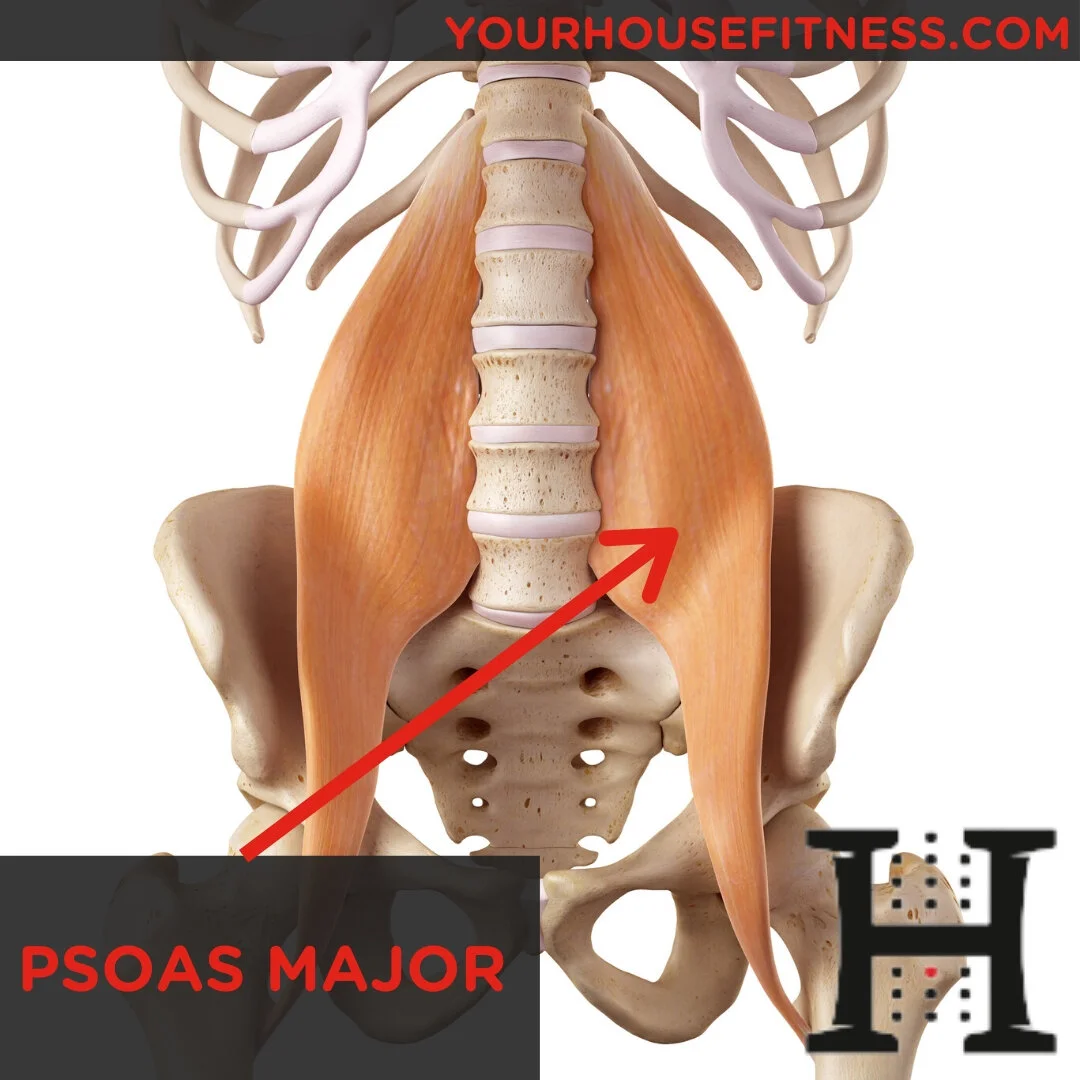Muscle Breakdown: Psoas Major
Published: June 27th, 2020
1st Revision: March 22st, 2023
Table Of Content
What Is the Psoas Major Muscle
The Psoas Major muscle is the only muscle that connects the trunk to the lower limb. The Psoas Major is split into a superficial and deep portion that each has it own origin. This muscle can be found on both sides of the lumbar spine and is a fusiform muscle. Some may consider the Psoas Major to be part of the hip flexors, due to its function of flexing the trunk and hip.
Psoas Major Cadaver
Here we see a picture of the Psoas Major and a cadaver. The psoas major muscle connects in a vertical position along the lumbar vertebrae, and stretches all the way to the femur.
Psoas Major Function
The Psoas Major causes flexion and external rotation of the hip and trunk. The Psoas Major also helps to stabilize the lumbar spine and maintain posture.
Psoas Major Origin
The superficial part of the Psoas Major originates from the vertebral body of T12 and L1-L4 and the intervertebral disks of T12 and L1-L4. The deep part of the Psoas Major originates from the transverse processes of L1-L5
Psoas Major Insertion
The Psoas Major inserts into the lesser trochanter of the femur.
Psoas Major Innervation
The Psoas Major is innervated by the Lumbar Plexus, specifically the branches of L1-L3.
Psoas Major Action
The Psoas Major is involved in many activities of daily living such as running, walking and sitting. It is an often overlooked and undervalued muscle however, it is very important to maintain the muscles strength.
Psoas Major Pain
Lower back pain can be a sign of injury to the Psoas Major. For example, Psoas Syndrome can occur from damage to the Psoas Major and result in low back pain, or pain in the thigh which can make activities difficult.
Psoas Syndrome can be diagnosed by a doctor, and an appropriate treatment plan can be developed to help you get back to normal. Sometimes, Psoas Syndrome can be misinterpreted for arthritis or a herniated disk, so it is important to have your injury examined.
Additionally, a tight Psoas Major can contribute to various types of pain experienced throughout the body such as knee, hip, back, and ankle pain. The majority of Psoas Major tightness comes from sitting and muscular imbalances. Therefore, it is imperative to stretch and strengthen the muscle!
Psoas Major Exercises
Many exercises can help to strengthen the Psoas Major. We’ve listed a few of them below:
Boat Pose
Unilateral Leg Raise
Supine Banded Hip Flexion
Stability Ball Pass
Boat Pose
The boat pose is common in yoga and is great for engaging the Psoas Major. Have a seat on the ground with your torso upright. Elevate both legs so that your knees are bent, and your shins are straight out in front of you. Contract the core and elevate your hands so that your palms are up and at knee high. Hold this position for 30 seconds.
Unilateral Leg Raise
The unilateral leg raise is the single leg version of the leg raise. Lie down on your back with your legs extended out in front of you. Rest your torso on the ground, with your shoulder and head elevated just above the ground. Slowly lift one leg towards the sky. Lower the leg back to the starting position, but do not let the foot touch the ground. Repeat the movement on the same leg for 3 sets of 10 reps.
You can also perform the double leg raise to engage the Psoas Major.
Supine Banded Hip Flexion
Anchor a resistance band to a stable support. Loop the other end of the resistance band around one of your feet. Lie down on your back with both legs extended towards the support. Lift the shoulder blades off the ground and begin to drive the knee of the leg that is under resistance towards the chest. Extend the leg back to the original position and repeat the movement for 3 sets of 10 reps.
Stability Ball Pass
Lie down on the ground with a stability ball in your hands. Lift your legs towards the sky to grab the stability ball from your hands. Hold the stability ball in your legs as you lower them down towards the ground, and simultaneously raise your hands above the head. Drive the legs back up towards the sky so you can grab the stability ball with your hands. Once you’ve grabbed the ball with your hands, raise the ball over your head and extend the arms over the head, but not touching the ground. Repeat the movement of the ball between the arms and the legs for 3 sets of 10 reps.
Psoas Major Stretch
The following stretches can help to release a tight Psoas Major. These may be especially helpful if you have been sitting down all day and are experiencing pain in the lower back:
Lunge Stretch

